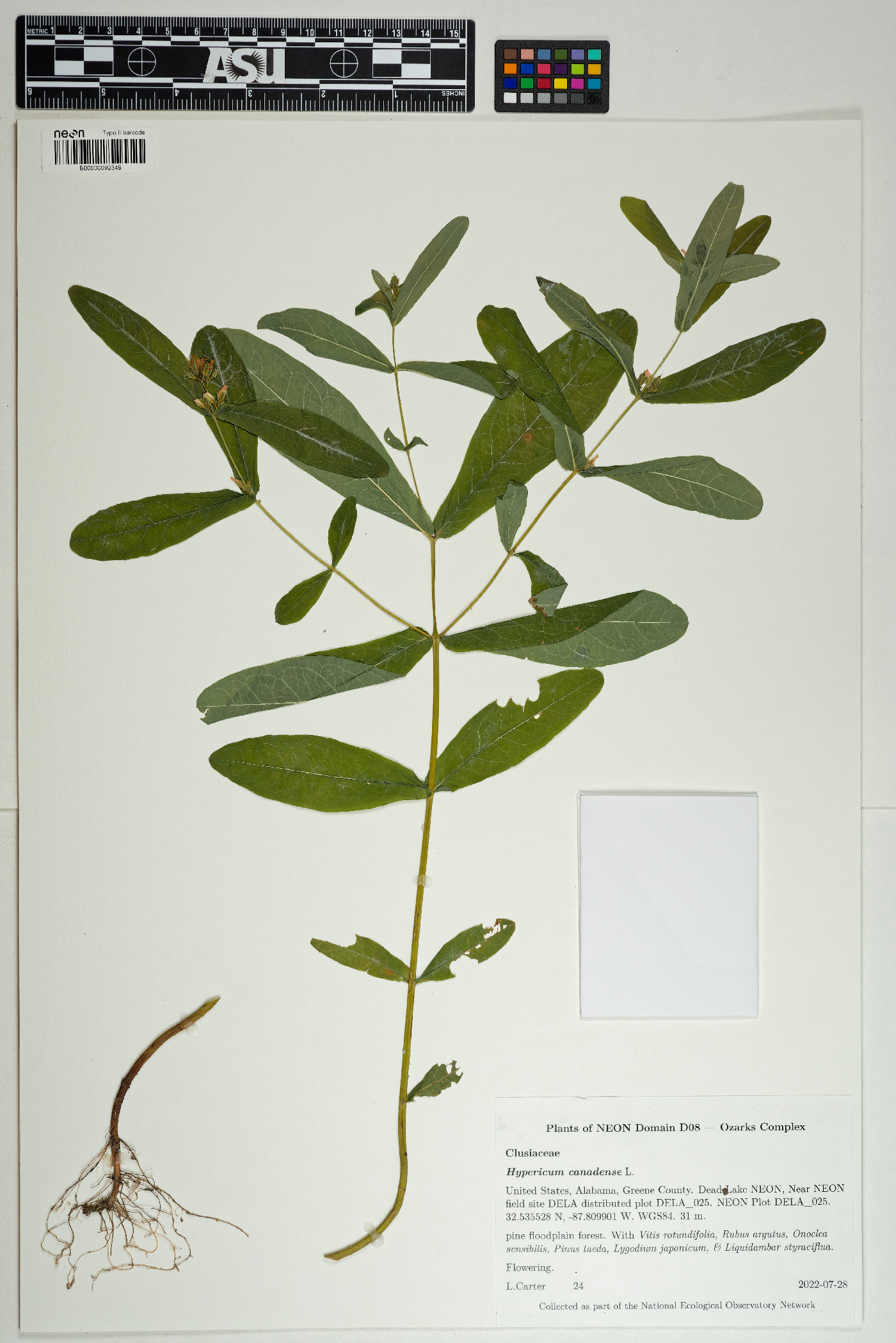Annual to perennial herb with short, leafy runners 10 cm - 0.6 m tall
Stem: slender and erect.
Leaves: opposite, 1 - 4 cm long, 1 - 4 mm wide, linear to narrow lance-shaped and inversely egg-shaped with a narrowly tapered base and blunt tip, non-toothed, single-veined or lightly three-veined.
Flowers: arranged on a loose (sometimes compact) inflorescence, subtended by awl-shaped bracts, with 3 - 4.5 mm long sepals that are lance-shaped and widest well below the middle with a pointed tip, five yellow petals 2.5 - 3 mm long, twelve to 22 stamens, and three styles to 1 mm long.
Fruit: a one-chambered capsule, purple, 4 - 6 mm long, conical, containing many 0.5 mm long seeds.
Similar species: Hypericum boreale, Hypericum canadense, Hypericum gentianoides, Hypericum gymnanthum, Hypericum majus, and Hypericum multilum have fewer than 25 stamens per flower. Hypericum boreale can grow as an aquatic or in wet soils. It reaches 10 - 40 cm tall, has stalkless oblong to oval leaves that are less than 2 cm long, and the flowers have leaf-like bracts, 2.5 - 3 mm long petals and eight to fifteen stamens. Hypericum gentianoides has green wiry stems that are highly branched, minute scale-like leaves that are pressed against the stems, tiny yellow flowers with five petals and five to ten stamens, and capsules two to three times the length of the sepals. Hypericum gymnanthum is distinguished because the stems are usually unbranched, the leaves are triangular lance-shaped or triangular egg-shaped and rarely more than three times as long as wide, the flowers have awl-shaped bracts and lance-shaped sepals beneath the 3 - 3.5 mm long petals and ten to fourteen stamens, and the capsules are lance-shaped to narrow conical and 3 - 5 mm long. Hypericum majus has lance-shaped leaves that are more than three times as long as wide and five- to seven-veined, and flowers with awl-shaped bracts, 4.5 - 6.5 mm long sepals, 3.5 - 4 mm long petals, and fourteen to 21 stamens. Hypericum multilum differs by its stems that are highly branched near the top, leaves that are rarely more than three times as long as wide, flowers having 1 - 4 mm long awl-shaped bracts and linear-oblong sepals beneath the 1.5 - 2.5 mm long petals and five to sixteen stamens, and capsules that are rounded at the tip and 2 - 3.5 mm long.
Flowering: late July to late September
Habitat and ecology: Locally common in acidic moist sandy flats.
Occurence in the Chicago region: native
Etymology: Hypericum is the Greek name for St. John's Wort, which blooms around St. John's Day (June 24). Canadense means "from Canada."
Author: The Morton Arboretum

